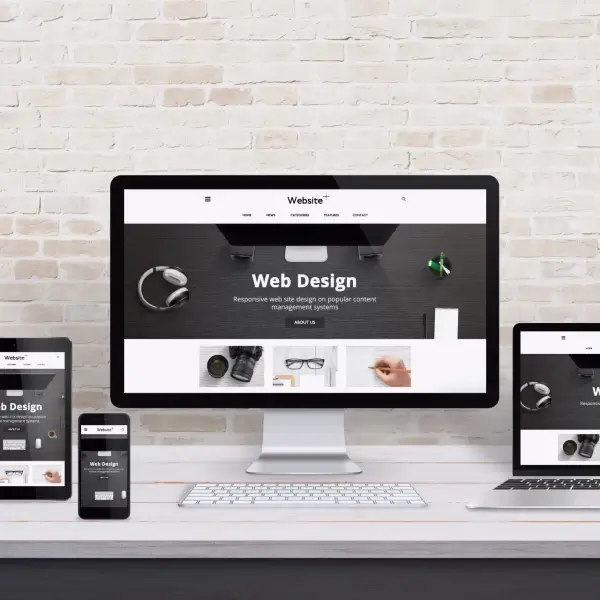Cheap Web Design that Doesn’t Look Cheap: Tips and Tricks
Cheap Web Design what is mean? In today’s digital age, a strong online presence is imperative for businesses of all sizes. A well-designed website serves as the virtual storefront, often forming the first impression potential customers have of your brand.
However, many small businesses and startups operate on tight budgets
making it challenging to invest in high-end web design. This blog will explore effective strategies to create a cheap web design that exudes professionalism and credibility.
- Prioritize User-Friendly Navigation: A clean and intuitive navigation structure is the backbone of any successful website. Users should be able to find what they’re looking for without hassle. Organize your content logically and use clear, concise menu labels. Consider a minimalistic approach by focusing on essential sections that guide visitors through your site seamlessly.
- Opt for Responsive Design: In a mobile-centric world, responsive design is non-negotiable. Ensure your website looks and functions flawlessly on various devices and screen sizes. Many inexpensive website builders and platforms offer responsive templates, saving you both time and money.
Strategic Use of Color Palette
Colors evoke emotions and influence user perceptions. Choose a color palette that aligns with your brand identity. Even with a limited budget, you can achieve a professional look by using a harmonious combination of colors that resonate with your target audience.
High-Quality Imagery
Visual content is a powerful tool to engage visitors. Invest in high-quality, royalty-free images that reflect your brand values. If you can’t afford a professional photoshoot, there are plenty of affordable stock photo websites available.
Compelling Content
Craft clear and compelling copy that communicates your message effectively. Informative, error-free, and concise content enhances your website’s credibility.
Typography Matters
Choose fonts that are easy to read and consistent with your brand image. Limit yourself to two or three fonts throughout your site. Mixing too many fonts can make your design look cluttered and unprofessional.
Whitespace Is Your Friend
Don’t be afraid of whitespace (or negative space). It gives your design room to breathe and directs users’ attention to important elements. A clutter-free layout fosters a sense of sophistication.
Integrate Social Proof
Even on a tight budget, you can showcase customer testimonials, reviews, or endorsements. Social proof adds credibility to your brand and reassures potential customers about the quality of your products or services.
DIY vs. Professional Help
While it’s possible to create a budget-friendly website on your own using website builders, sometimes investing in professional help can yield better results. Freelance designers or design agencies might offer affordable options and bring expertise to the table.
Clear Call-to-Action (CTA):
Incorporate well-designed, attention-grabbing CTAs throughout your website. Whether it’s to make a purchase, sign up for a newsletter, or contact you, CTAs guide users toward meaningful actions. Use contrasting colors and persuasive language to make them stand out.
Consistent Branding:
Maintain consistency in your branding elements across the website. This includes your logo, color scheme, typography, and tone of voice. Consistency reinforces your brand identity and helps build trust.
Use of Icons and Graphics:
Icons and graphics can effectively convey information in a visually appealing manner. They can also break up text-heavy sections, making your content more digestible. Many online resources provide free or low-cost icon sets that you can integrate into your design.
Limited Animation:
Subtle animations can add a touch of elegance to your website. Consider using animations for elements like hover effects, transitions, or loading sequences.
Optimize for Speed:
A slow-loading website can deter visitors and negatively impact your search engine rankings. Optimize your images, minimize code, and leverage browser caching to ensure your site loads quickly. Many budget-friendly platforms offer optimization tools.
Minimize Advertisements:
If your website includes ads, keep them to a minimum and ensure they are relevant to your audience. Too many ads can make your site look cluttered and unprofessional, affecting user experience.
Regular Updates:
Frequently update your website with fresh content, whether it’s blog posts, product updates, or news. An active website demonstrates that your business is current and engaged with its audience.
Accessible Design:
Ensure your website is accessible to all users, including those with disabilities. Use alt text for images, provide captions for videos, and ensure proper contrast for text readability.
Feedback and Testing:
Seek feedback from friends, colleagues, or potential users. Conduct usability testing to identify any design or functionality issues that might arise. Addressing these early on can save you time and potential headaches down the road.
Learn Basic SEO: Basic search engine optimization (SEO) practices can help your website rank higher in search engine results. Research relevant keywords, optimize meta titles and descriptions, and use descriptive URLs.
Data Analytics:
Integrate Google Analytics or similar tools to track user behavior on your website. Analyzing user data can provide insights into what’s working and what needs improvement.
Future Scalability:
Choose a website platform that allows for future scalability. As your business grows, you may want to add more features or expand your website’s functionality.
Stay Updated with Trends:
Keep an eye on current web design trends. While you don’t need to follow every trend, incorporating some modern elements can keep your website looking fresh.
Start website today: How to create a website










